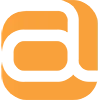I looked at the keyword report within Google Analytics. The keyword report lists the search terms that bring visitors to your website. We categorise these search terms as follows:
- Branded search : A search for your company or brand name(s)
- Un-branded search : A search for something that you do
- Junk search terms
I have covered the differences between branded and un-branded search traffic in a previous post (http://www.arkom.co.uk/news/article/search-engine-optimisation-seo.asp). This time I wanted to take a closer look at the branded search. I looked at a cross section of manufacturing and engineering company websites we look after. Analytics yields the following results:
- Branded search: 83%
- Un-branded search 15%
83% of visitors finding these websites do so by searching for the company name! That's a lot. A search for your company name should result in your company being listed in the search results first or very near the top, clicking on the link will take the user to your website, and display your home page. So your home page receives something like 83% of your search traffic, so your home page is worthy of special consideration.
One chance at making a first impression
When people click though from a search engine and land on your home page there will be a change in the brand image displayed on the screen, from the Google brand to your brand. You have only one chance to make a first impression (cheezy but true), you need to answer these two questions fairly quickly :
Am I in the right place?
Are these the right guys to help?
And make a strong first impression to a potential new customer. NLP (Neuro-Linguistic Programming) or best practice communication tells us that you can achieve this be communicating your brand and key marketing messages using the three main communication preferences VAK, these are:
- Visually: Communication using Images
- Auditory: Written and Spoken words
- Kinesthetic: Gut feel and communication though doing
How does this translate to designing your website home page? We recommend your home page contain the following elements:
a) Your brand or company name. Obvious, but make sure its big and prominent, remember it was your brand name that was the subject of the search in the first place (hence a branded search), so this is critical and make sure its big enough to read.
b) Your strapline or Descriptor. If you brand name is not descriptive of what you do, then you will need a strap line for your Auditory website visitors.
c) Images and words communicating your main marketing messages. This depends on what you want to communicate, this can include sectors you work in, product ranges, applications, etc..
d) Overall design. The overall design should look good, clean, professional and make sure all critical information is above the fold.
And finally, when visitors have digested this information which should take no more than 30 seconds, the next question they will have is …
What shall I click on next?
Tell visitors which are the most important parts of your website, so provide clear and easy to see signposts of where to go next.
Great examples of well-designed home pages are:
www.filtronic.co.uk/
